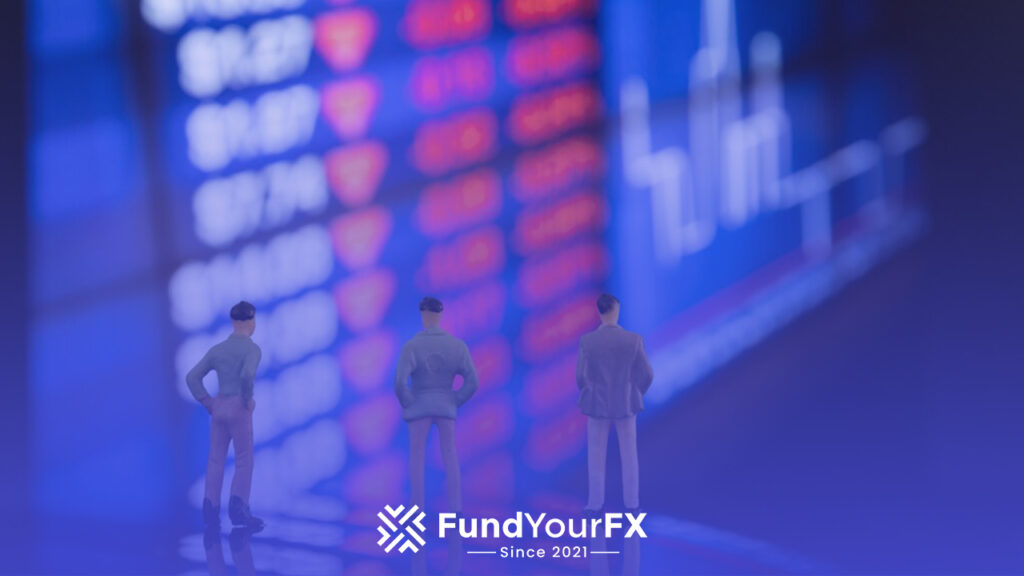When you place a trade, you likely expect to receive the price displayed on your screen. However, markets can change quickly, leading to a situation where the price you get differs from what you expected. This phenomenon is known as slippage, and it can have unexpected effects on your profits. Understanding the reasons behind slippage and how to manage it is essential for any trader.
Slippage occurs when there is a disparity between the expected price of a trade and the actual price at which the trade is executed. This can happen due to various factors, such as market volatility, low liquidity, or delays in order execution. For instance, if you’re trying to buy a stock during a sudden market drop, the price may change before your order is filled, resulting in slippage.
What is Slippage in Trading?

In trading, slippage occurs when the execution price of your order differs from what you anticipated. Essentially, slippage refers to the gap between the price you wanted to buy or sell at and the price at which your order is actually fulfilled. This can affect both buy and sell transactions, altering your entry or exit points in the market.
Slippage can sometimes be advantageous, resulting in a more favorable price. However, it can also lead to less desirable outcomes, especially if market conditions shift against you. This phenomenon is particularly prevalent in fast-moving markets, where prices can fluctuate rapidly within a matter of seconds between the time you place your order and when it’s filled. Effective risk management strategies are crucial in these situations to help minimize unexpected losses caused by slippage. Traders can use tools like stop-loss orders to help manage the risks associated with slippage during periods of heightened volatility.
Is 2% Slippage High?
Whether 2% slippage is considered high depends on what you’re trading and where. For major, highly liquid assets like big stocks or top cryptocurrencies, 2% slippage is usually quite high—normal trades tend to have slippage well under 0.5%. However, if you’re dealing with illiquid assets, small-cap stocks, or volatile tokens on decentralized exchanges (DEXs), 2% slippage is much more common and sometimes necessary to get your trade through. Professional traders generally aim for much lower slippage.
Does Slippage Make You Lose Money?
Yes, slippage can result in a financial loss compared to your intended trade. Here’s how:
- Buying: If you intend to buy an asset at $100, but due to slippage your order is executed at $101, you pay $1 more than planned.
- Selling: If you intend to sell at $100 but your order executes at $99, you receive $1 less.
- Impact: The difference (in these examples, $1 per unit) is the “cost” of slippage. Over time or with large trades, this can add up to significant losses or reduced profits.
Is slippage always a “loss”?
- Technically, yes: You get a worse price than you expected, which is a loss relative to your plan.
- But not always an overall loss: If your trade is still profitable (e.g., you bought at $101 and the price goes to $120), you make money, but you make *less* than if there had been no slippage.
- Sometimes, slippage can be positive: Rarely, you may get a better price than expected, known as “positive slippage,” but most traders experience negative slippage.
Causes of Slippage in Trading
When market conditions shift rapidly or liquidity diminishes, slippage becomes a significant issue for traders who want to execute their orders at specific prices. High market volatility is a leading cause of slippage—swift price changes can result in your trade being filled at a price worse than anticipated. Events such as major economic announcements or sudden geopolitical developments often trigger these fluctuations, leaving traders unprepared. Applying effective money management strategies can help traders navigate unpredictable market environments and reduce potential losses due to slippage.
The size of your order also influences the likelihood of slippage. If you place a sizable order in a market with low trading volume, there may not be enough buyers or sellers willing to transact at your desired price. This situation can compel you to accept less favorable prices. One way traders can counteract this is by employing stop-loss orders to automatically limit potential losses when market prices move unexpectedly.
Additionally, slippage risk escalates during periods of low liquidity, such as overnight trading sessions or weekends, when fewer participants are active and spreads tend to widen. Algorithmic trading can further exacerbate rapid price changes, which can contribute to
How Slippage Affects Different Markets?
Slippage refers to the difference between the expected price of a trade and the actual price at which the trade is executed. This phenomenon can occur in any trading environment, but its severity can differ based on market conditions, particularly volatility and liquidity. Traders should also be aware that economic indicators can influence slippage levels, as major data releases may rapidly shift prices.
In the forex market, slippage tends to become more pronounced during periods of high volatility, such as when significant economic news is released. Traders may find that their orders are filled at less favorable prices than anticipated, which can affect their overall trading strategy.
Cryptocurrencies are notorious for their price swings and can experience even greater slippage. Due to often limited liquidity, traders might face considerable gaps between their expected execution price and the actual price, leading to unexpected losses or reduced profits.
Equities, or stocks, can also be affected by slippage, particularly with less popular stocks that have lower trading volumes. In these cases, a trader’s order might significantly influence the stock’s price, resulting in a notable discrepancy from the expected price.
In the commodities market, slippage can spike during sudden supply shocks or geopolitical events. These events can trigger swift price movements, and traders might find themselves dealing with increased slippage as the market reacts.
Even index funds and ETFs aren’t immune to slippage. Rapid changes in market sentiment can cause execution prices to deviate from the fund’s net asset value, impacting investors’ returns.
Traders can help reduce the impact of slippage by setting realistic profit targets and maintaining discipline in their trading strategies.
Slippage Trading Examples
Even experienced traders face slippage, which can occur rapidly and lead to unexpected costs. For instance, if you decide to buy 20,000 shares of the SPY ETF with a market order, you might anticipate a specific price. However, as your order is processed through available liquidity, the average price you actually pay could increase, potentially resulting in a slippage cost, such as the $-717.00 observed in real cases. This is especially relevant for traders using leverage, as even small slippage can magnify gains or losses.
In the forex market, if you place a market order for EUR/USD at 1.2000, sudden market fluctuations might mean you actually get filled at 1.2005, costing you 5 pips. High liquidity in major currency pairs like EUR/USD generally helps minimize slippage, but during volatile events or low-liquidity periods, even these pairs can experience significant price changes.
Even with a narrow bid/ask spread in Apple stock trading, you could end up buying at $183.57 instead of $183.53. Significant market events, like the 2010 Flash Crash, illustrate the dramatic impact slippage can have during periods of high volatility.
In trading, understanding slippage is vital, as it can affect your overall strategy and profitability. As markets fluctuate, being aware of how slippage works can help you make more informed decisions. It’s important to recognize that bid-ask spread changes can directly influence the likelihood and severity of slippage, especially during periods of increased volatility or low liquidity.
Strategies to Minimize Slippage
Since slippage can quickly reduce your profits, it’s vital for traders to adopt strategies that help minimize it. Managing your trades effectively can safeguard your capital and enhance your trading results. How to avoid slippage in trading? one of the best methods to mitigate slippage is by using limit orders instead of market orders, which allows you to have better control over the price at which your trades are executed. Paying attention to market liquidity is also key; trading in highly liquid markets typically lowers the risk of slippage. In addition, understanding your risk-to-reward ratio can help you make more informed decisions about which trades are worth taking, especially when slippage could affect your potential gains and losses.
Additionally, keeping an eye on bid-ask spreads and timing your trades during calm market conditions can further decrease your chances of experiencing slippage.
Here are three practical strategies to help you reduce slippage:
- Use limit orders to have greater control over the execution price of your trades.
- Trade during high liquidity periods to minimize slippage.
- Monitor bid-ask spreads and steer clear of trading around volatile news events.
Understanding and managing risk management techniques is also essential when aiming to minimize slippage and protect your trading capital.
Evaluating the Impact of Slippage on Trading Performance

When evaluating your trading outcomes, it’s vital to understand how slippage can significantly affect your profits or worsen your losses. By keeping an eye on slippage metrics, you can more accurately assess how much your execution prices differ from your expectations. This is particularly important during times of market volatility or in less liquid markets, such as cryptocurrencies.
Even a small amount of negative slippage, like 1% of a trade’s value, can gradually diminish your trading edge. Therefore, monitoring your average slippage per trade is just as crucial as tracking spreads or commissions.
Recognizing the effects of slippage also plays a role in shaping your trading mindset. Knowing what to expect reduces the likelihood of frustration influencing your decisions. This awareness allows you to refine your strategies and set more realistic profit goals.
As you continue to refine your trading practices, consider using tools or platforms that provide detailed analytics on slippage. These insights can help you make informed decisions and improve your overall trading performance.
Conclusion
Slippage is an unavoidable aspect of trading, particularly in fast-moving markets. To handle slippage effectively, it’s important to grasp its causes and how it can affect various assets. For instance, during high volatility, the price at which you execute a trade may differ from the expected price, leading to potential losses or increased costs.
To minimize slippage, consider using limit orders, which allow you to set the maximum price you are willing to pay or the minimum price you are willing to accept. This can help protect you from unfavorable prices. Additionally, trading in liquid assets—those that have high trading volumes—can reduce the likelihood of slippage, as there are generally more buyers and sellers available.
Implementing smart strategies and maintaining robust risk management practices can significantly reduce the impact of slippage on your trading results. By staying proactive and informed, you can maintain a greater degree of control over your trades, ultimately leading to more consistent performance.







